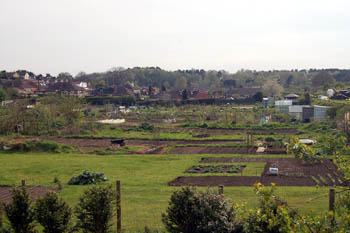
Heath and Reach allotments from Birds Hill April 2008
It seems reasonable to assume that, given that Heath and Reach was certainly settled by the time of the Norman Conquest (the Manor of Gladley appears in the Domesday Book of 1086) that there would have been a medieval chapel of ease. This building may well have been in the angle formed by Birds Hill and Linslade Road, where the school formerly stood and where allotments lie today as this land was always known as Chapel Close. The earliest mention of a chapel in Heath comes in the court roll of the Manor of Leighton alias Grovebury for 1549 [KK944/5] in which William Arden was admitted to "the dissolved chapel in Hethe and Rache with one close enclosing round it". The use of the word dissolved implies that the chapel was closed during Henry VIII's dissolution of the monasteries in the 1540s which also implies that the chapel was a chantry chapel in which masses for the dead were said. Whether it also served the purpose of a chapel of ease, or was a separate building, one cannot know.
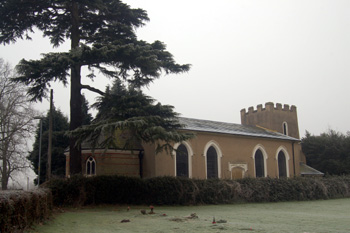
Heath and Reach church from the north December 2009
Saint Leonard's was a chapel of ease in the parish of Leighton Buzzard and did not become a separate ecclesiastical parish until 1825. The church is a comparatively modern building. It was dismissed contemptuously by Sir Nikolaus Pevsner in his Buildings of England volume for Bedfordshire as: "a poor specimen".

Church tower from the south-west June 2008
He dated the earliest part of the fabric, the tower, to the 16th century, a date followed by the former Department of Environment when they listed the church as Grade II in 1967, on the strength of the window in the west wall of the tower [see below, however, for an alternative date].
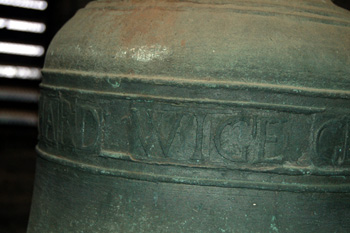
Richard Wige's name on the bell January 2009
Former County Archivist Chris Pickford in his Bedfordshire Historical Records Society volume Bedfordshire Churches in the Nineteenth Century: H-R notes that the earliest firmly datable part of the church is the bell, inscribed with the date 1695 and the fact that Richard Wige, gentleman was: "o[w]ner of me". At that date the chapel (as it then was) belonged to the Wige, or Wigge family, Richard's daughter Elizabeth surrendering it to the inhabitants of the village as a gift in 1705.
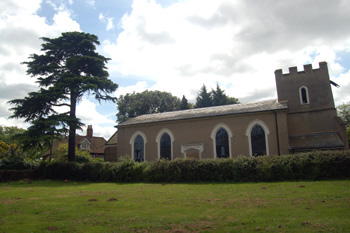
The church and Heath Manor from the north-west June 2008
Volume 81 published by the Bedfordshire Historical Records Society (2002) is devoted to returns made during episcopal visitationsto the county by the Bishop of Lincoln in the early 18th century, edited by former County Archivist Patricia Bell. The return for Leighton Buzzard in 1706 states: "But in the chappell of Heath & Reach (which was built on a private person's Copy-hold ground, who about a year since surrendered it for the use of the Inhabitants of that Hamlet for Divine Service) there was the like Service and Sermon every Lord's day so long as the Inhabitants of that hamlet did contribute to the payment of a Minister, but the Contributions ceasing, there is, at present, no use made of it". This might imply that the whole chapel may have been built not long before the start of the 18th century, suggesting it is late 17th rather than 16th century - probably 1695, the date of the bell.

Heath and Reach church from the gallery looking east January 2009
The church in the early 19th century was described as a "small poor Perpendicular building" suggesting that it might all have been of the same date as the tower. A terrier of 1822 described the chapel, with its chancel, as being 72 feet long by 20 feet wide and containing merely a pulpit, reading desk, one bell, Bible, Prayer Book, chest and pulpit cushion.
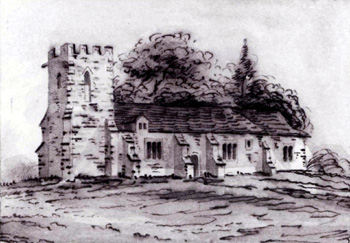
Saint Leonard's in 1828 [Z50/57/13]
Three years later, on 30th June 1825, the Bishop of Lincoln consecrated the chapel on its becoming a separate ecclesiastical parish. Two years later it was reported to be: "in want of repair, particularly on the south side and very damp in winter". Work to repair the building began in 1828 and it quickly became apparent that the fabric was so bad that only a complete rebuilding of the main body of the church would do.